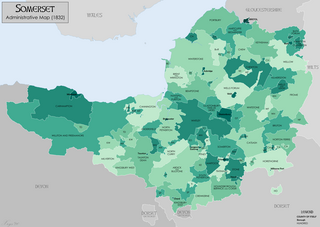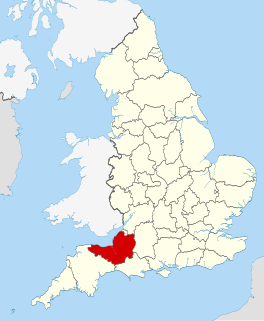| Key | |
| | Abbey/Priory/Cathedral |
| | Accessible open space |
| | Amusement/Theme Park |
| | Castle |
| | Country Park |
| | English Heritage |
| Forestry Commission | |
| | Heritage railway |
| | Historic House |
| | Places of Worship |
| | Museum (free/not free) |
| | National Trust |
| | Theatre |
| | Zoo |
Tourist attractions in the English county of Somerset include:
- Blake Museum


- American Museum in Britain


- Bakelite Museum


- Barrington Court


- Bath Abbey

- Bath Assembly Rooms

- Bath Postal Museum

- Beckford's Tower

- Bishop's Palace, Wells

- Blagdon Lake

- Brean Down Fort

- Brean Leisure Park

- Bridgwater and Taunton Canal

- Bristol Channel
- Building of Bath Collection


- Burrow Hill Cider Farm
- Cadbury Castle

- Chalice Well

- Cheddar Gorge


- Chew Valley Lake

- Clatworthy Reservoir

- Claverton Pumping Station

- Cleeve Abbey


- Clevedon Court


- Clevedon Pier
- Clifton Suspension Bridge
- Coleridge Cottage Netherstowey


- National Cycle Route 24 (Colliers Way)

- Cothay Manor

- County Ground, Taunton
- Cricket St Thomas

- Dunster Doll Museum

- Dunster Castle


- Dunster Working Watermill

- East Lambrook Manor gardens

- East Somerset Railway

- Ebbor Gorge


- Exmoor

- Farleigh Hungerford Castle



- Fashion Museum

- Fleet Air Arm Museum, RNAS Yeovilton

- Folly Farm, Stowey

- Fyne Court


- Gartell Light Railway

- Georgian Bath
- Glastonbury Abbey

- Glastonbury Tor


- Glastonbury Tribunal

- The Grand Pier Weston-super-Mare
- Hadspen house and garden


- Halswell House, Goathurst

- Ham Hill

- Haynes International Motor Museum

- Herschel Museum of Astronomy


- Helicopter Museum, Weston-super-Mare

- Holburne Museum of Art


- Holnicote Estate


- Jane Austen Centre


- Kennet and Avon Canal

- King John's Hunting Lodge Axbridge


- Lambretta Scooter Museum

- Lytes Cary


- Market House Museum, Watchet

- Mendip Hills AONB

- Mid-Somerset Show

- Montacute House


- Muchelney Abbey


- Museum of Bath at Work

- Museum of East Asian Art


- Museum of Somerset


- Nettlecombe Court

- Noah's Ark Zoo Farm

- The North Somerset Butterfly House
- Nunney Castle


- Peat Moors Centre

- Priest's House Muchelney


- Prior Park Bath


- Quantock Hills AONB

- Radstock Museum

- River Avon

- River Chew
- Roman Baths Bath

- The Shoe Museum, Street

- Somerset and Dorset Joint Railway

- Somerset Brick and Tile Museum,

- Somerset Coal Canal
- Museum of Somerset


- Somerset Levels

- Somerset Military Museum


- Somerset Rural Life Museum

- Somerset Space Walk
- South West Coast Path

- Stanton Drew stone circles


- Stembridge Mill, High Ham

- Stoke sub Hamdon Priory

- Taunton Stop Line
- Tintinhull Garden

- Treasurer's House Martock


- Tyntesfield


- Victoria Art Gallery

- Watchet Boat Museum

- Wellington Monument
- Wellington Museum


- Wells and Mendip Museum

- Wells Cathedral

- West Country Carnival
- West Pennard Court Barn

- West Somerset Rural Life Museum and Victorian School

- West Somerset Railway

- Weston Museum

- Westonzoyland Pumping Station Museum

- Willows and Wetlands Visitor Centre

- Wimbleball Reservoir

- Wookey Hole Caves










